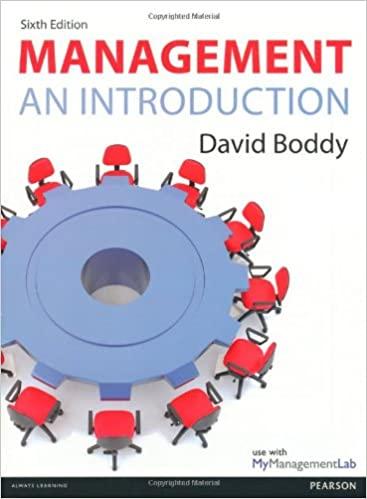Question
Perhaps the most significant insight that governments can take from the global pandemic is that collaboration works, particularly when focused on the needs of citizen
Perhaps the most significant insight that governments can take from the global pandemic is that collaboration works, particularly when focused on the needs of citizen customers. Around the world, departmental boundaries have eroded, as organizations have been forced to work together, led by cross-governmental taskforces. Data has been shared to provide services to those that need them.
The urgency of the COVID-19 response has turned the vision of an optimistic and progressive civil service into a reality by breaking down the walls within government departments, between departments and between departments and citizens.
In the past, barriers to this type of connected and joined-up arrangements had developed over many years and had become ingrained in the culture of government. Information governance had been dominated by lore over law, which blocked data from being shared with people who needed it, even within organizations. Fiefdoms and budgets were also dominant factors in the way decisions were made, which risked making services inefficient and ineffective. COVID-19 has blown a great deal of this behavior away. In the UK, an agile and collaborative approach was taken when the Shielding program1 was set up in days to support clinically vulnerable groups. This program, which involved seven government departments and a range of charities and NGOs, used NHS data to enable local authorities to provide vulnerable groups with food and basic supplies throughout a 20-week isolation period. This program clearly demonstrated the importance of relationships, collaboration and agile working, which delivered successful outcomes across organizational structures and governance.
In Australia, there has been unprecedented reform to the national decision-making process through the abolition and replacement of the Council of Australian Governments (COAG).2 The body, comprised of states, territories and the federal government, had previously been criticized for its slow approach to national policy reform. The new 'National Cabinet' process that replaced COAG was established in the immediate aftermath of the pandemic. It features significantly streamlined processes and decision-making structures.
In recent years, government transformation has been a key priority in Saudi Arabia. In 2016, the Kingdom released its Vision 2030 strategy through which building a more high-performing and agile government was outlined as a key theme.3 Since then, this vision has been realized with government taking on a joined-up approach, with clearer links between policy decisions, delivery, and performance monitoring. This agile approach was apparent in the way the Saudi government has responded to the pandemic through the use of multi-institutional committees. Most notably are the cross-ministerial and functional collaborations between the healthcare, public finance, economy and planning, technology, and transport entities.
Government in the post-pandemic new reality also must focus on the needs of citizens as customers and put them at the center of how the public sector operates. For instance, rather than fall back on old data protocols, meet the customer where they are. If they are happy for their records to be shared to make their lives easier, do it. Many citizens overestimate how well-connected governments are and there is an opportunity for the public sector to catch up with these expectations. Efficiency will be a key driver in the new reality as governments address their debt burden and organizations cannot continue with back office functions and systems that are not aligned with their purpose and the needs of their customers.
One of the best examples of this is analytics. Governments gather and process huge amounts of data but are often not able to develop insights from this information to inform their strategies. If data is managed as an asset, public-sector organizations can improve their efficiency and the effectiveness of their services. At its worst, some governments are still reliant on paper systems that are the enemy of insight. Even more advanced organizations struggle to rapidly gather, process, integrate and present data from across their organizations in a way that drives actions, whether they be at the policy or service level.
The technology that underpins much of government working can also prevent government from operating in a connected and modern way. Many governments had to scramble to deliver stimulus payments and often run multiple disconnected payment systems. Replacing old, on premise backbone systems with a common platform across government is a big step towards efficient and integrated working.
The response to COVID-19 has been a hotbed of innovation, as clever people devise ways to adapt to new working conditions. Departments should ensure that there is a way to embed innovation across their organization through information-sharing and creating a culture that embraces change. That culture should also extend to challenging bigger elements: traditional methods of cost-benefit analysis, policy consultation and evaluation should be tested to see whether they are aligned with societal issues and whether they promote intended outcomes.
Connecting government organizations around citizen customers and their outcomes will take time but COVID-19 has demonstrated the need to do so and that imperative will grow as governments are forced to do more with fewer resources.
question: Crticially asses how similar or dissmilar was the practice of the governement in Egypt in light of elements dicussed in the case -provide evidence to your answers.
Step by Step Solution
There are 3 Steps involved in it
Step: 1

Get Instant Access to Expert-Tailored Solutions
See step-by-step solutions with expert insights and AI powered tools for academic success
Step: 2

Step: 3

Ace Your Homework with AI
Get the answers you need in no time with our AI-driven, step-by-step assistance
Get Started


